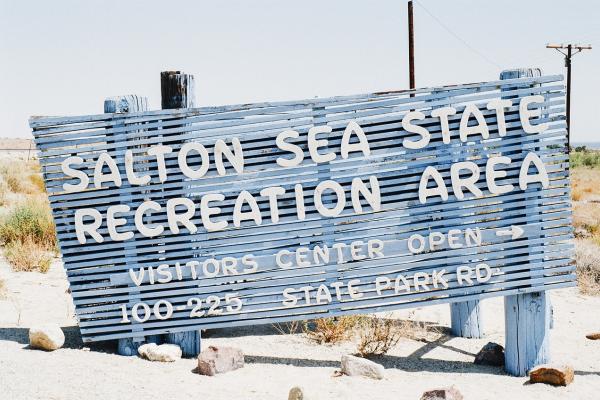Balancing Progress and Preservation in the Future of Lithium Mining in the U.S.

A recent article in the business section of Forbes titled "2024 Could Be The Year For American Lithium" highlights significant developments in the US energy sector's transition in lithium production.
From the mid-to-late 1800s, the remote region of Silver Peak in Nevada was a prime source of silver and gold, fueling the United States' westward expansion. Approximately 150 years later, Silver Peak is home to the nation's only lithium mine, producing 5,000 metric tons of unprocessed lithium annually. This output is crucial for powering phones, laptops, and electric vehicle batteries. After extraction, the lithium is sent to Albemarle's Kings Mountain processing facility in North Carolina, creating a domestic supply loop. Although this supply is modest compared to the projected U.S. demand of over 500,000 metric tons by 2032, it is a vital component of the U.S. supply chain and a glimpse into the country's clean energy future.
However, questions remain about whether future lithium resources will be sourced from American mines or other nations. This issue is critical for U.S. energy security. Between 2019 and 2022, 94% of raw U.S. lithium imports came from Chile and Argentina, with refined lithium primarily sourced from Canada. The U.S. also relies on China for cathodes, anodes, and batteries. Australia and Chile dominate lithium production and reserves globally, while China controls over half of the refining capacity.
Considering Chile's plans to nationalize its lithium industry, recent election outcomes in Argentina, and ongoing trade conflicts with China, the U.S. must secure consistent supplies to meet its future lithium demand. Transitioning to American lithium sources could make the U.S. a major player in the global market, enhancing its competitiveness in the clean energy transition.
The U.S. Geological Survey indicates that America has 14 million metric tons of lithium resources, ranking third worldwide. Recent discoveries suggest even greater potential, with estimates indicating that the Nevada-Oregon McDermitt Caldera and the Salton Sea could hold the world's largest lithium deposits.

On the manufacturing and investment front, lithium-related news continues to make headlines. In January 2024, Controlled Thermal Resources (CTR) began constructing their Salton Sea lithium mine and geothermal power plant, initially set to produce 25,000 metric tons of lithium, with the potential to reach 175,000 metric tons. In April 2024, the U.S. Department of Energy announced a conditional loan of $2.26 billion to Lithium America's Thacker Pass project in Nevada.
Federal investments, spurred by the Infrastructure Investment and Jobs Act, are strengthening the domestic lithium supply chain, with significant funding going to projects like Albemarle's new processing plant in Kings Mountain.
While the push for a domestic lithium supply chain is gaining momentum, it must be conducted responsibly. The U.S. Department of Interior's September 2023 report highlighted challenges posed by the antiquated Mining Law of 1872, which fails to direct mineral exploration to environmentally and culturally appropriate areas, promote timely development, encourage meaningful engagement with impacted communities, or compensate taxpayers for minerals extracted from public lands.
To address these issues, Senator Martin Heinrich (D-NM) introduced the Clean Energy Minerals Reform Act to eliminate the patenting of federal lands, impose a federal minerals royalty, establish a reclamation fund for abandoned mines, and review lands for future mining.
Despite progress, projects like CTR's Salton Sea and Lithium Americas' Thacker Pass face legal challenges from conservation and environmental justice groups. These groups argue that environmental reviews were flawed and lacked proper tribal consultation. While Lithium Americas has survived initial lawsuits, efforts to amend the Mining Law of 1872 continue. Additionally, the Fish and Wildlife Service is investigating the potential endangered status of a local snail species at Thacker Pass.
The U.S. needs more lithium and responsible mining practices that consider the impacts on tribal communities, cultural sites, and the environment. Oversight and transparency from mining companies are essential to ensure ethical and environmentally responsible operations. The clean energy transition revolution has begun, and extensive U.S. lithium mining will undoubtedly advance. Still, there should be careful management of the methods and impacts of this mining to protect the environment and local communities.
To learn more, visit Forbes.
Related Stories:
- America's lithium laws fail to keep pace with rapid development. Reuters, March 25, 2024
- The lithium boom: What's holding back a lithium rush in the U.S.? WBUR On Point, March 11, 2024
- Demand for lithium batteries could harm U.S. water resources, PBS NewsHour, January 25, 2024
- Tribes face an uphill battle to defend their sacred land against lithium mining, Howard Center for Investigative Journalism, January 25, 2024
- Salton Sea lithium deposits could help EV transition, support economically devastated area, PBS NewsHour, January 24, 2023
